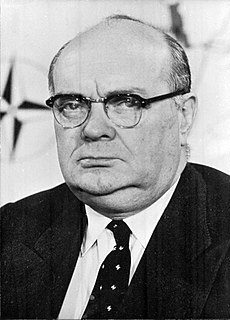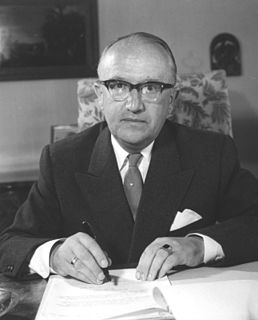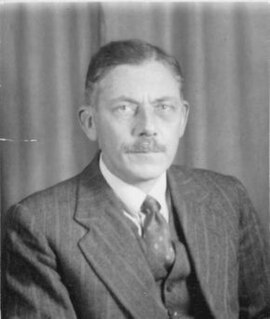
The Council of Europe is an international organisation whose stated aim is to uphold human rights, democracy and the rule of law in Europe. Founded in 1949, it has 47 member states, with a population of approximately 820 million, and operates with an annual budget of approximately 500 million euros.

The European Economic Community (EEC) was a regional organisation that aimed to bring about economic integration among its member states. It was created by the Treaty of Rome of 1957. Upon the formation of the European Union (EU) in 1993, the EEC was incorporated and renamed the European Community (EC). In 2009, the EC's institutions were absorbed into the EU's wider framework and the community ceased to exist.

The European Union is a geo-political entity covering a large portion of the European continent. It is founded upon numerous treaties and has undergone expansions and secessions that have taken it from 6 member states to 27, a majority of the states in Europe.

The Treaty of Rome, officially the Treaty establishing the European Economic Community brought about the creation of the European Economic Community (EEC), the best-known of the European Communities (EC). It was signed on 25 March 1957 by Belgium, France, Italy, Luxembourg, the Netherlands and West Germany and came into force on 1 January 1958. Under the name Treaty on the Functioning of the European Union, it remains one of the two most important treaties in the modern-day European Union (EU).

Paul-Henri Charles Spaak was an influential Belgian Socialist politician, diplomat and statesman. Along with Robert Schuman, Alcide Degasperi and Konrad Adenauer he was a leader in the formation of the institutions that evolved into the European Union.

Walter Hallstein was a German academic, diplomat, and statesman. He was the first president of the Commission of the European Economic Community and one of the founding fathers of the European Union.
The European Political Community (EPC) was proposed in 1952 as a combination of the existing European Coal and Steel Community (ECSC) and the proposed European Defence Community (EDC). A draft EPC treaty, as drawn up by the ECSC assembly, would have seen a directly elected assembly, a senate appointed by national parliaments and a supranational executive accountable to the parliament.

The San Giorgio Monastery was a Benedictine monastery in Venice, Italy, located on the island of San Giorgio Maggiore. It stands next to the Church of San Giorgio Maggiore, which serves the monastic community. The old monastic buildings currently serves as the headquarters of the Cini Foundation.

The period saw the first moves towards European unity as the first bodies began to be established in the aftermath of the Second World War. In 1951 the first community, the European Coal and Steel Community was established and moves on new communities quickly began. Early attempts at military and political unity failed, eventually leading to the Treaties of Rome in 1957.

The Messina Conference of 1955 was a meeting of the six member states of the European Coal and Steel Community (ECSC). The conference assessed the progress of the ECSC and, deciding that it was working well, proposed further European integration. This initiative led to the creation in 1957 of the European Economic Community and Euratom.

The Spaak Committee was an Intergovernmental Committee set up by the Foreign Ministers of the six Member States of the European Coal and Steel Community (ECSC) as a result of the Messina Conference of 1955. The Spaak Committee started its work on 9 July 1955 and ended on 20 April 1956, when the Heads of Delegation of the six Member States of the ECSC approved the Spaak report. The committee worked on two main topics, one was the creation of a general common market and the other one was the establishment of a European Community for the peaceful use of atomic energy.

The Intergovernmental Conference on the Common Market and Euratom was held in Brussels and started on 26 June 1956 with a session in the Grand Salon of the Belgian Foreign Ministry. The negotiations went on at the Château of Val-Duchesse in Auderghem (Brussels) and would continue until March 1957. The conference was held to draft the Treaties establishing the European Economic Community (EEC) and the European Atomic Energy Community. The conference built on the results of the Spaak Report of the Spaak Committee and the decision taken at the Venice Conference to prepare the plan for the establishment of a common market and the establishment of a European Community for the peaceful use of atomic energy.
The Spaak method of negotiation is named after Paul-Henri Spaak, a Belgian politician, who applied this method at the Intergovernmental Conference on the Common Market and Euratom in 1956 at Val Duchesse castle in preparing for the Treaties of Rome in 1957.

The Venice Conference was held in Venice on 29 and 30 May 1956. The Foreign Ministers of the six Member States of the European Coal and Steel Community met at the Cini Foundation on the Venetian island of San Giorgio Maggiore to discuss the Spaak Report of the Spaak Committee. At the conference the Foreign Ministers explained the views of the ECSC governments on the proposals in the Spaak Report. As a result of the conference they decided to organize the Intergovernmental Conference on the Common Market and Euratom in order to prepare for establishment of a common market and a European Community for the peaceful use of nuclear power.

The Spaak Report or Brussels Report on the General Common Market is the report drafted by the Spaak Committee in 1956. The Intergovernmental Committee, headed by Paul-Henri Spaak, presented its definitive report on 21 April 1956 to the six governments of the member states of the European Coal and Steel Community.

The Benelux memorandum of 1955 was a document drafted by the three Benelux countries on 18 May 1955 as a means to reviving European integration on the basis of a general common market.

Johan Willem "Wim" Beyen was a Dutch politician and diplomat of Liberal signature and businessman. Beyen played an important role in the creation of the European Economic Community and is regarded as one of the Founding fathers of the European Union.

The secretary general of NATO is an international diplomat who serves as the chief civil servant of the North Atlantic Treaty Organization (NATO). The officeholder is responsible for coordinating the workings of the alliance, leading NATO's international staff, chairing the meetings of the North Atlantic Council and most major committees of the alliance, with the notable exception of the NATO Military Committee, as well as acting as NATO's spokesperson. The secretary general does however not have any military command role; political, military and strategic decisions ultimately rest with the member states. Together with the chairman of the NATO Military Committee and the supreme Allied commander, the secretary general is one of the foremost officials of NATO.
The Bech-Bodson Ministry was the government of Luxembourg between 29 December 1953 and 29 March 1958. It was a coalition between the Christian Social People's Party (CSV), and the Luxembourg Socialist Workers' Party (LSAP).

Russell Frederick Bretherton,, was a British economist, civil servant and amateur entomologist, particularly noted for his membership of the Spaak Committee in 1955.









